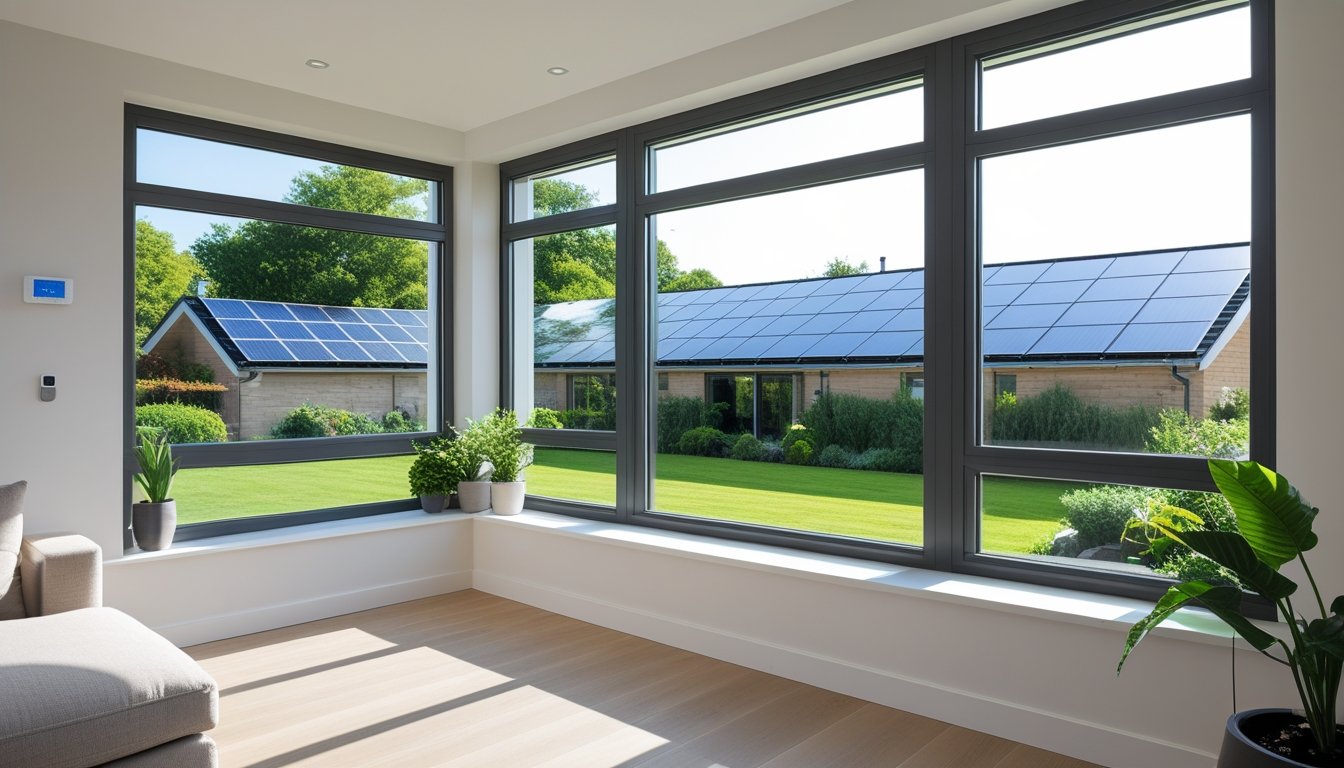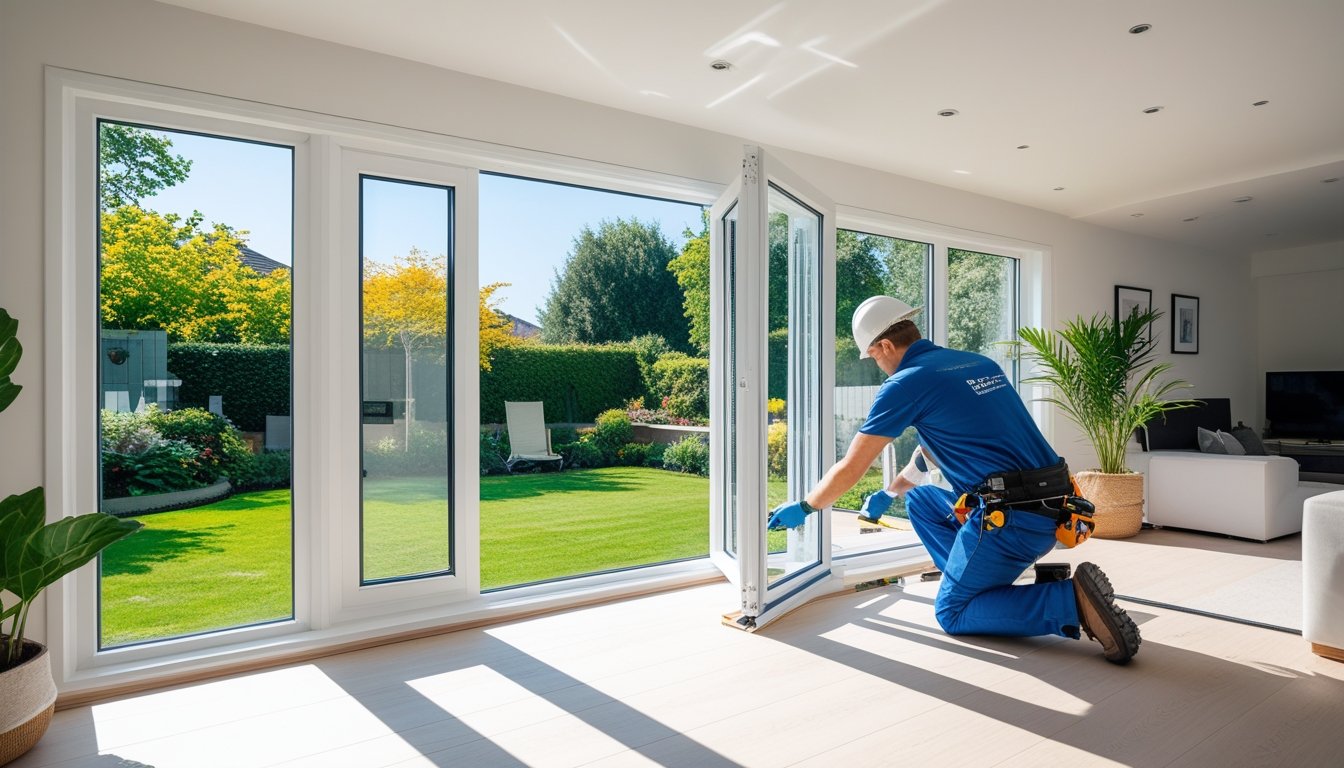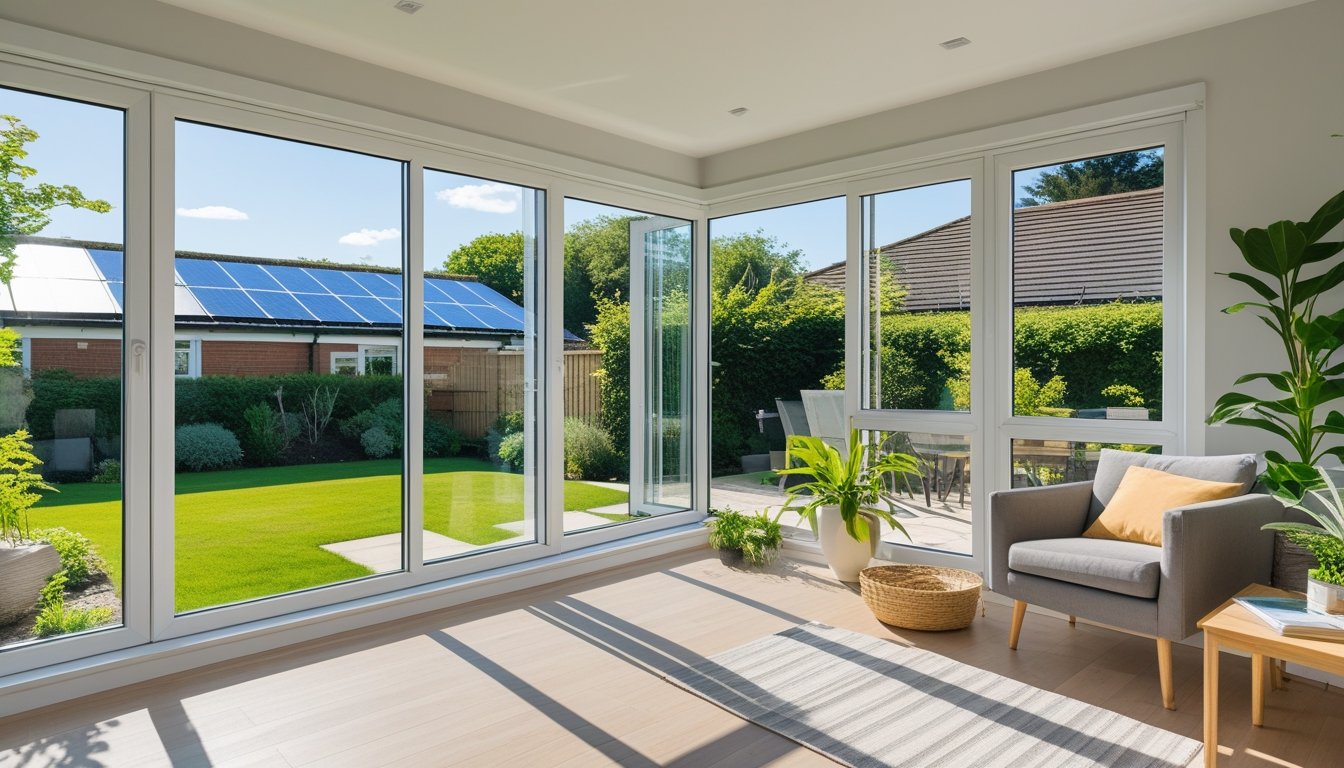Late updated: 02 Jul 2025 14:07
Written by: Daniel Harper
Top Energy-Efficient Window Solutions for Homes: Enhance Comfort and Save Costs
With rising energy costs, the importance of improving home energy efficiency cannot be overstated. Windows are a critical element, representing one of the main areas where energy savings can be achieved or squandered. Selecting the right energy-efficient windows can dramatically reduce your energy bills while enhancing your home's comfort and style. By investing in the latest window technologies, including triple-pane designs and smart glass, we can significantly cut down on noise and ensure optimal temperature regulation throughout the year.

Many of today's options combine modern materials and innovative coatings to block unwanted heat during summers and retain warmth in winters. This article will guide you through core features and strategies for choosing the best solutions for your needs. It is an investment that pays dividends in the form of lower utility bills and a more comfortable living environment.
Different window options and installation tips will be discussed to help make informed choices. Our insights include not only key features but also practical advice on selecting and maintaining these advanced solutions. We believe that by understanding and leveraging these technologies, achieving an energy-efficient home is well within reach.
Key Takeaways
- Efficient windows can lower energy bills.
- Technologies include triple-pane and smart glass.
- Proper selection and installation are critical.
Core Features Of Top Energy-Efficient Window Solutions
Energy-efficient windows are crucial in reducing energy consumption and lowering energy bills. These windows are designed using advanced technologies to provide superior insulation, comfort, and performance. Let us explore key aspects that contribute to their effectiveness—such as glass technologies, frame materials, and performance ratings.
Understanding Energy Efficiency In Windows
Energy efficiency in windows largely depends on their ability to provide insulation and reduce heat transfer. By minimising heat loss in the winter and limiting heat gain in the summer, these windows help maintain comfortable indoor temperatures and reduce energy costs. Our focus is on technologies that enhance insulation properties and improve overall energy performance of windows.
Key Glass Technologies: Low-E Coatings, Triple-Glazing, And Argon Gas
The glass used in windows significantly affects energy performance. Low-emissivity (Low-E) coatings are thin metallic layers applied to glass surfaces that reflect infrared light, reducing heat transfer. Triple-glazing involves three panes of glass, offering better insulation compared to double-pane windows. Argon gas is often used between panes, providing an additional layer of insulation due to its lower thermal conductivity.
Choosing The Best Window Frame Materials
Frame materials play an important role in window efficiency. Vinyl frames are popular due to their high thermal performance and low maintenance needs. Wood windows offer excellent insulation but may require more maintenance. Aluminium windows are lightweight and durable, yet less efficient unless thermally broken. Advanced materials can enhance the overall energy efficiency and longevity of energy-efficient windows.
Performance Ratings: U-Factor, R-Value, And Solar Heat Gain Coefficient
Performance ratings guide us in choosing the right energy-efficient windows. The U-Factor measures heat transfer rates, where lower values indicate better insulation. R-Value is the inverse; higher values represent better insulation properties. Solar Heat Gain Coefficient (SHGC) indicates how well a window blocks solar heat—important for comfort and energy savings. Ratings can help us make informed decisions when selecting windows for our homes.
Selecting And Installing The Right Energy-Efficient Windows For Your Home

Energy-efficient windows can significantly lower heating and cooling costs. We need to consider various factors such as window styles, climate suitability, proper installation, and reliable brands to make informed decisions. Let's explore these topics in detail.
Evaluating Window Styles: Casement, Double-Hung, Sliding, And More
Choosing the right window style is crucial for balancing aesthetic appeal and energy efficiency. Casement windows, which open outward with a crank, often provide an excellent seal against air leaks. Double-hung windows, with their simple up-and-down sliding mechanism, offer easy maintenance but may be less efficient.
Sliding windows, meanwhile, are ideal for wide, short spaces and can provide good ventilation. Picture windows, although non-operable, are great for enhancing views and maximising natural light. Selecting the right style can enhance our home's comfort and property value.
Assessing Window Performance For Different Climates And Home Styles
The energy performance of windows largely depends on the local climate. In cold climates, windows with low U-values that reduce heat transfer are beneficial. Triple-glazed windows can be particularly effective in such areas. In contrast, in warmer regions, windows with low Solar Heat Gain Coefficients (SHGC) are ideal as they help block heat intake.
ENERGY STAR certifications can guide us in selecting suitable windows for specific climate zones. Home style and orientation also play a role in selecting the right windows for light and ventilation optimisation.
Installation Best Practices For Optimal Efficiency
Professional installation ensures that windows function at peak efficiency, reducing energy consumption and lowering energy bills. Proper installation involves precise measurement and fitting, which are crucial for effectively sealing gaps and preventing air leakage. Weatherstripping and insulation are essential to further enhance energy efficiency.
Using experienced installers minimises the risk of installation errors. If we focus on quality installation, it supports long-term savings and enhances the durability and effectiveness of the windows we choose.
Comparing Top Window Brands, Certifications, And Customer Experiences
When selecting energy-efficient windows, brand reputation matters. Renewal by Andersen and Pella are known for their durable and eco-friendly options, such as composite and fibreglass windows. The Andersen 400 Series is popular for its low maintenance and high performance.
Checking certifications like ENERGY STAR helps us ensure that the windows meet energy efficiency standards. Customer feedback and satisfaction ratings provide insights into the usability and maintenance of different brands, influencing our purchasing decisions.
By comparing various brands and their offerings, we can choose windows that suit our budget and efficiency goals.
Frequently Asked Questions

Energy-efficient windows and coverings can drastically cut down on utility bills and improve home comfort. From specific window types known for their insulating properties to top-performing treatments, let's address some common queries.
What types of window coverings provide the best thermal insulation during winter months?
Insulated cellular shades are a top choice due to their honeycomb structure, which traps air and creates a thermal barrier. These shades can significantly reduce heat loss. Pairing them with heavy curtains can further enhance insulation.
Which window models have achieved Energy Star's most efficient rating in recent years?
Windows featuring double or triple panes with gas fills and low-emissivity coatings regularly score high in energy efficiency. Several models from major brands achieve Energy Star's top ratings annually due to their superior thermal performance.
What are the highest R-value windows available on the market for residential properties?
Triple-pane windows with insulated frames and low-E coatings typically offer the highest R-values, providing excellent thermal resistance. They are ideal for regions where maintaining indoor warmth is crucial.
How do insulated cellular shades compare to other energy-efficient window treatments?
Compared to other treatments, insulated cellular shades offer superior thermal insulation thanks to their unique design. While blinds and curtains may provide some protection, the cellular structure is unmatched in preventing heat loss.
What should homeowners look for when selecting energy-efficient windows for cold climates?
In cold climates, select windows with low U-factors and high R-values. Look for double or triple glazing, low-E glass, and gas fills. Energy Star-certified windows specifically designed for cold regions are recommended.
Can you suggest window treatment solutions that effectively retain heat within the home?
Thick, insulated drapes combined with cellular shades can drastically improve heat retention. Additionally, window films with insulating properties further reduce heat loss and draughts, maintaining indoor comfort.
